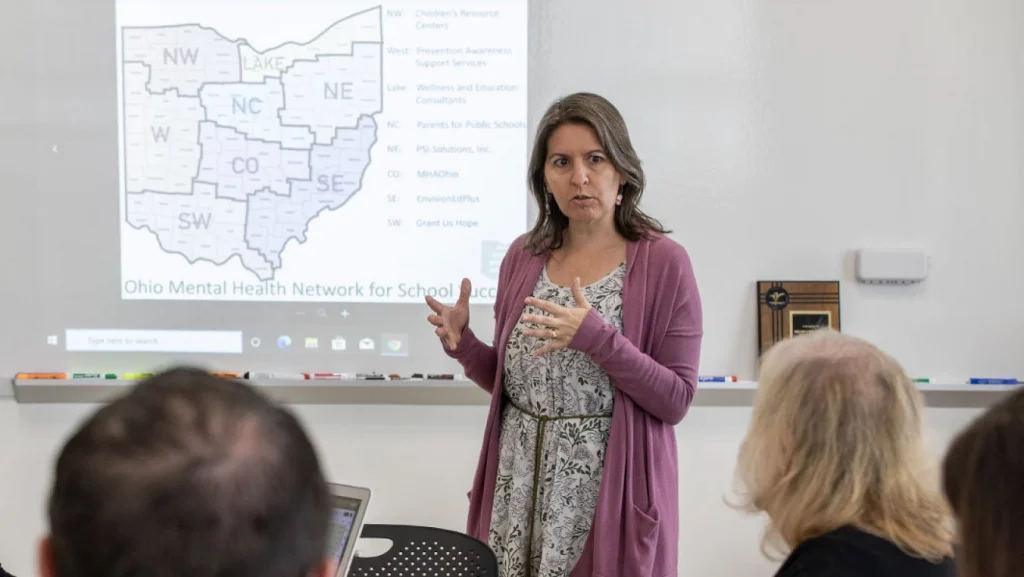News

Ohio’s school-based behavioral health services grow amid a youth mental health crisis
By: Kendall Crawford | The Ohio Newsroom
Posted on:
CINCINNATI (The Ohio Newsroom) — Youth mental health has worsened across the country since the pandemic. Ohio has been no exception.
A third of Ohio students reported challenges with anxiety, and more than 100,000 high school aged youth reported experiencing depression, according to a 2022 survey.
But there is a bright spot. Ohio has more school-based mental health resources than it did seven years ago. The number of partnerships between community behavioral health centers and schools has more than doubled since 2017, according to the Ohio Council of Behavioral Health and Family Service Providers. In the last year alone, the state has seen around a 20% increase in schools offering these services.
That’s a step in the right direction, said Teresa Lampl, the council’s executive director.
“Kids spend a lot of time in school,” Lampl said. “So it’s a great place to meet kids where they are and to be able to provide services, connect with their parents, and be able to meet their needs.”
An increase in youth mental health care options
Community behavioral health centers typically offer mental health and substance use services to people regardless of ability to pay. More than 3,000 Ohio schools enlisted their help last school year to provide counseling, preventative screenings and crisis intervention in the classroom. Lampl said they’ve also developed programming to teach students coping skills.
“They help create the culture and work with the school to make sure students are getting those social emotional learning skills, so that they can achieve academically,” she said.
The increased partnership has, in large part, been driven by increased awareness of declining mental health among kids. The COVID-19 pandemic started a statewide focus on increasing student mental health services, said Cricket Meehan, director of Ohio School-Based Center of Excellence for Prevention & Early Intervention.
“There’s a magnifying glass now on school mental health issues,” Meehan said. “Because of the emphasis on that, we are seeing a whole lot more collaborative partnerships happening, which is exactly what needs to happen.”
State investments in school-based care
Ohio has seen a spur of investments in student mental health since 2020. Last year, the state legislature created the Student Wellness Fund to help schools provide wrap-around services. And, Meehan said, the state also used COVID relief funds to research the best ways to provide mental health care in schools.
She said they’ve found a lot of success in adding staff members to schools who can act as a liaison between the classroom and community mental health services.
“Our education world and our mental health and behavioral health world, they don’t always speak the same language,” Meehan said.

Workforce challenges
Even with the increased focus on youth mental health, Lampl said accessing care is still a challenge for many young people in Ohio. There’s a shortage of mental health professionals to meet the demand, she said.
Her organization’s report found that full-time employee vacancies at community behavioral health centers increased by 11% between last school year and the one before. That could stifle the centers’ ability to fill gaps at Ohio schools.
“Accessing mental health care comes with long waiting lists. And so, unfortunately, what happens is by the time somebody gets to care, their symptoms have likely increased substantially,” Lampl said.
She hopes having more mental health professionals working with schools can increase their visibility and encourage young people to enter the field.
“It is life changing and life saving work,” she said.

